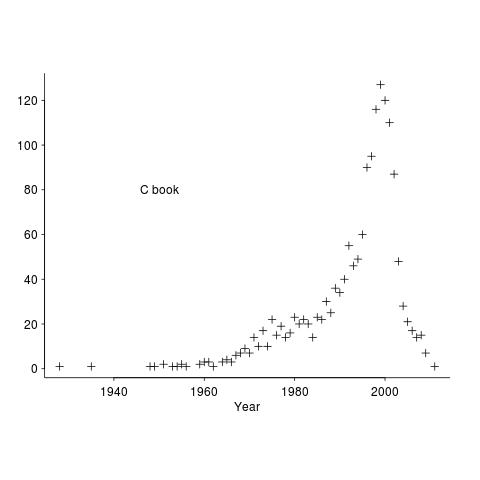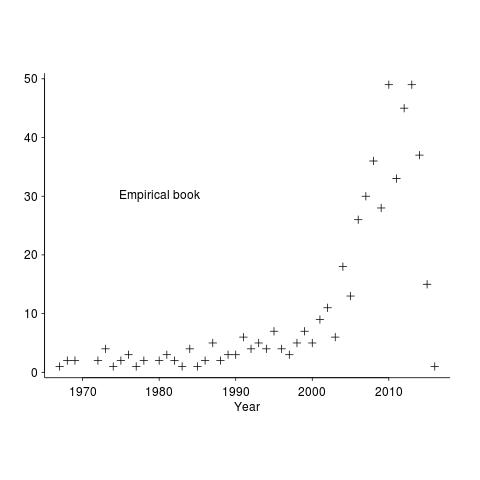Citation patterns in my two books
When writing my C book, I cited any paper or book whose material I made use of and/or that I thought would be useful to the reader. One of the rules for academic papers is to cite the paper that ‘invented’ the idea; this is intended to incentivize researchers to work hard to discover new things that will be cited many times (citation count is a measure of the importance of the work and these days a metric used when deciding promotions and awarding grants).
When I started writing the C book the premier search engine was AltaVista, with Google becoming number one a few years before the book was completed. Finding papers online was still a wondrous experience and Citeseer was a godsend.
The plot below shows the numbers of works cited by year of publication, for the C book.

These days all the information we could possible need is said to be online. I don’t think this is true, but it might be a good enough approximation. But being online does not mean being available for free, a lot of academic papers remain behind paywalls.
It used to be possible to visit a good University library and copy papers of interest (I have a filing cabinet full of paper from the C book). Those days are gone, with libraries moving their reference stock off-site (the better ones offer on-premise online access).
My book on empirical software engineering is driven by what data is available, which means most cited work is going to be relatively new. There is another big factor driving the work I cite this time around; I am fed up with tax payer funded research ending up behind paywalls, so I am only citing papers that can be downloaded for free (in practice they also have to be found by a search engine or linked to from somewhere or other) and when the ‘discovery’ paper is not available for download I cite a later work that is.
The plot below shows the numbers of works cited by year of publication, for the empirical software engineering draft book.

The rising slope is much sharper for the latest book. I think most of the difference is driven by the newness of the subject, software researchers tend to be very good (at least the non-business department ones) at making pdfs available for download.
Another factor might be how Citeseer and Google Scholar cross reference papers; Citeseer links to works cited by a paper (i.e., link back in time), while Google Scholar links to works that cite the paper (i.e., link forward in time).
Recent Comments